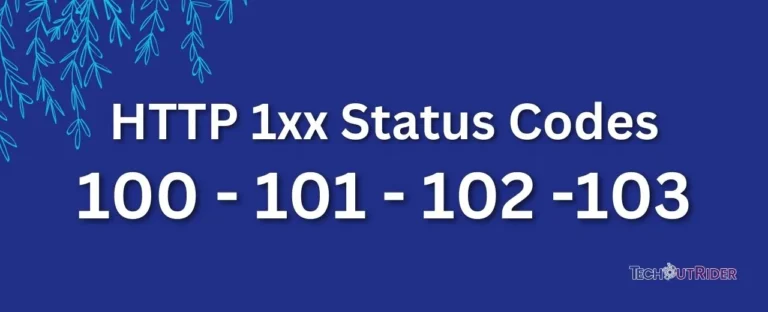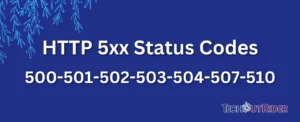As a beginner in web development, you might have encountered mysterious three-digit numbers in HTTP responses. Fear not! These are HTTP status codes, and they play a crucial role in communication between your browser and web servers. Let’s demystify the 1xx series of these codes.
What Are HTTP Status Codes?
HTTP status codes are like little notes passed between your browser and a web server. They convey information about the outcome of an HTTP request. When you click a link or submit a form on a website, your browser sends a request to the server. The server responds with a status code to tell your browser what happened. These codes fall into different classes, and today, we’ll focus on the 1xx series.
1xx: Informational Responses
The 1xx codes are all about communication. They don’t indicate success or failure; instead, they provide information during the request-response dance. Let’s break them down:
- 100 Continue: Imagine you’re at a drive-thru, and you’ve just placed your order. The server responds with a “continue” signal, meaning, “Hey, keep going! Your request is on track.”
- 101 Switching Protocols: This one’s like changing lanes on the highway. It tells your browser that the server is switching to a different protocol (like upgrading from HTTP to HTTPS).
- 102 Processing (WebDAV): Think of this as the server saying, “Hold on, I’m working on it!” It acknowledges your request but hasn’t cooked up a full response yet.
- 103 Early Hints: Picture a waiter giving you a sneak peek of the dessert menu while the chef prepares your main course. This status code hints at resources your browser might need soon.
Why Do We Need Them?
You might wonder, “Why bother with these codes? Can’t we skip straight to the good stuff?” Well, they serve a purpose:
- Efficiency: By sending early hints, servers help browsers preload resources, making your web experience snappier.
- Protocol Upgrades: The 101 code ensures smooth transitions when servers switch protocols.
- Request Continuation: 100 Continue keeps the conversation flowing, especially for large requests.
When Do You Encounter 1xx Codes?
Honestly, not too often. Most of the time, you’ll deal with the 2xx (success), 3xx (redirection), 4xx (client errors), or 5xx (server errors) codes. But now that you know about the 1xx series, consider yourself part of the elite club of web developers who appreciate the finer details of HTTP communication!
Remember, these codes are like secret handshakes between your browser and servers. So next time you see a 1xx code, nod knowingly—you’re in on the web development magic! 🌐✨








